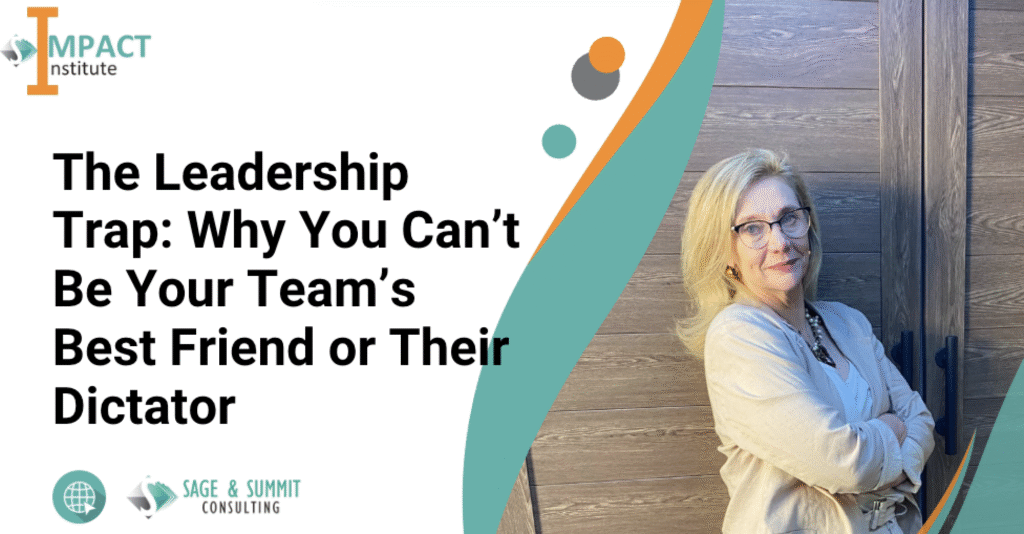The Leadership Trap
We’ve all seen them, and maybe, if we’re honest, we’ve been them.
On one side stands the Friend Leader: harmony-driven, consensus-seeking, and allergic to conflict. The office feels like a social club, decisions are made by popular vote, and everyone’s feelings are protected, sometimes at the cost of progress.
On the other stands the Authoritarian Dictator: the leader who rules by command and control, demands compliance, and creates distance through fear and hierarchy.
In today’s polarized, complex world, it’s easy for leaders to retreat to one of these extremes. But here’s the hard truth: both come at a steep cost, to your team, your culture, and your own leadership credibility.
The Cost of Extremes in Leadership
The Friend Leader sacrifices accountability for approval. You can’t discipline your friends, so performance issues are ignored. Expectations blur, resentment builds, and ironically, the respect you wanted most disappears.
The Authoritarian Dictator crushes creativity and retention. As Amy Edmondson reminds us, psychological safety evaporates in fear-based environments. People stop speaking up, hide mistakes, and the most capable employees quietly plan their exit.
“Leadership is not about being in charge. It is about taking care of those in your charge.”
— Simon Sinek, Leaders Eat Last
The real issue? Neither extreme builds a healthy power distance in leadership.
What Is Healthy Power Distance?
A healthy power distance means you’re respected for your position and competence, yet approachable enough to hear the truth. You hold authority without arrogance and empathy without over-identification.
“The best leaders are those who can maintain both conviction and openness—strong back, soft front.”
— Jim Collins, Good to Great
This balance doesn’t come naturally. It requires emotional maturity, self-awareness, and consistent professional boundaries.

Five Ways to Build a Healthy Power Distance in Leadership
- Don’t Ask, don’t tell – Inquire: Drop the instinct to fix or direct. Practice *Humble Inquiry* (Edgar Schein): ask questions you don’t already know the answer to. When things go wrong, try: “Help me understand the steps that led to this outcome.” This honours your team’s expertise and focuses on learning, not blame.
- Formalize Commitments, Not Favours or orders: The Friend Leader relies on verbal requests; the Balanced Leader uses clear agreements. Document tasks, deadlines, and success metrics. Accountability then becomes about professional standards—not personal loyalty.
- Master the Contagious Calm: As Daniel Goleman notes, emotional self-regulation is contagious. When you hold boundaries or discuss performance, be the emotional anchor. Your calm ensures the conversation stays constructive, not defensive.
- Draw the Decision Line: Collaboration is essential, but clarity is kindness. Define which decisions are shared and which are yours alone. Bain’s *RAPID* model helps teams identify who recommends, agrees, performs, inputs, and decides. Clear lines protect relationships.
- Cultivate Safety, Not Silence: High-performing teams don’t hide bad news. Set the tone early: “It’s okay to make a mistake, but it’s not okay to hide it.” This simple rule builds psychological safety and a culture of learning over fear.
The Clarity That Builds Trust
Being a respected leader isn’t about being liked or feared—it’s about being clear.
When roles, boundaries, and expectations are transparent, people work with confidence and commitment.
That’s the real measure of maturity in leadership: the ability to sustain both trust and accountability through a healthy power distance.



